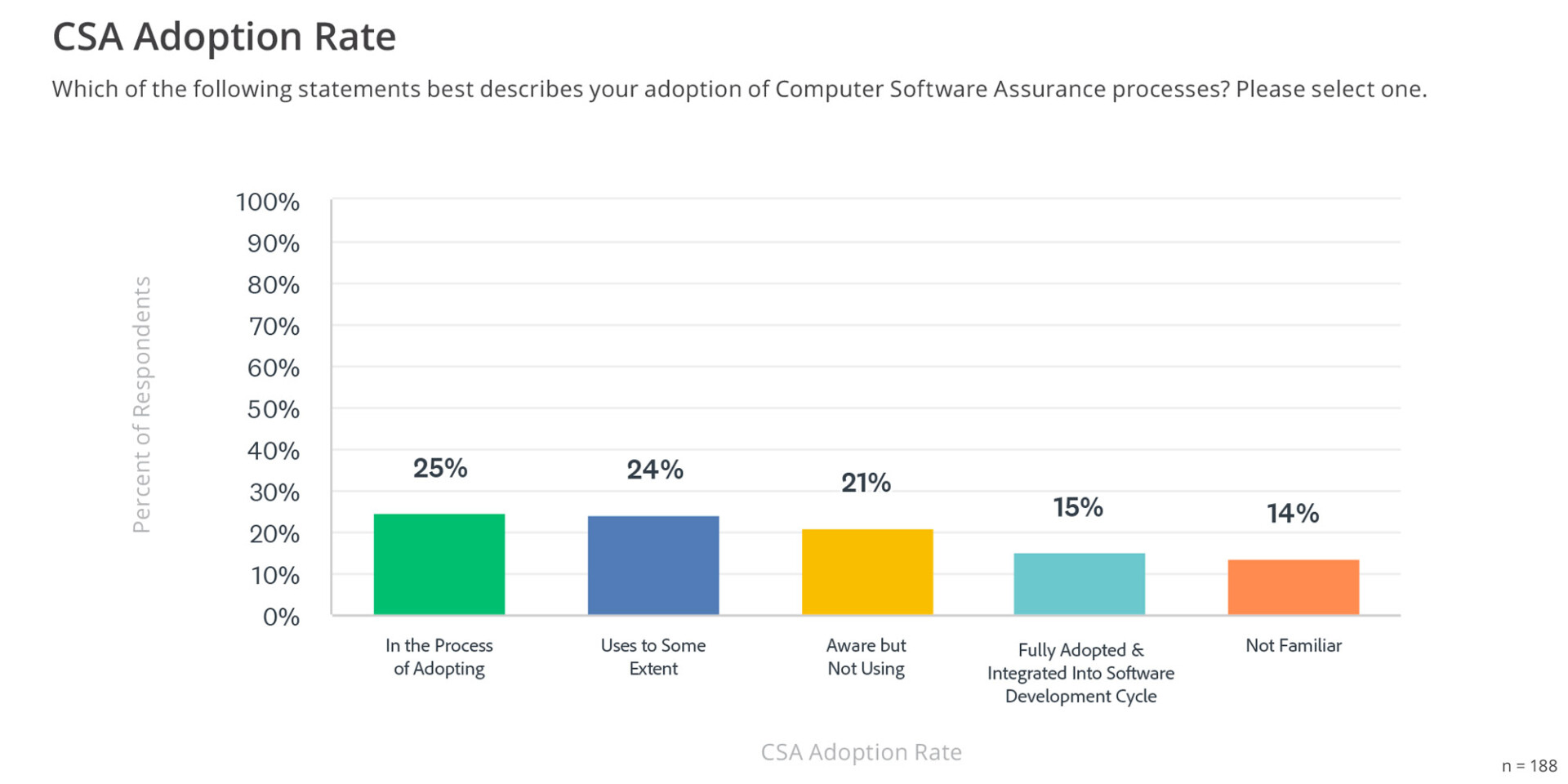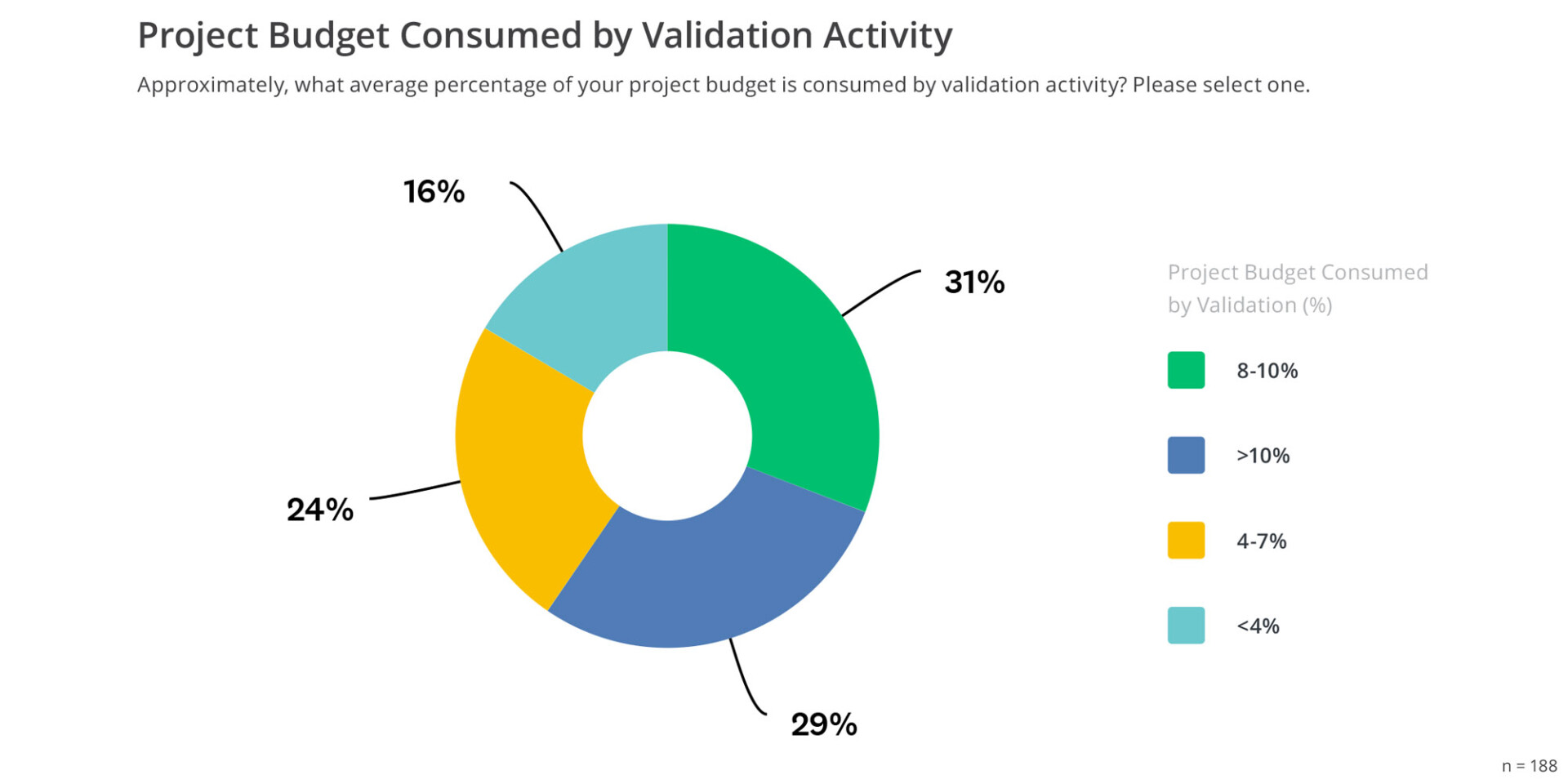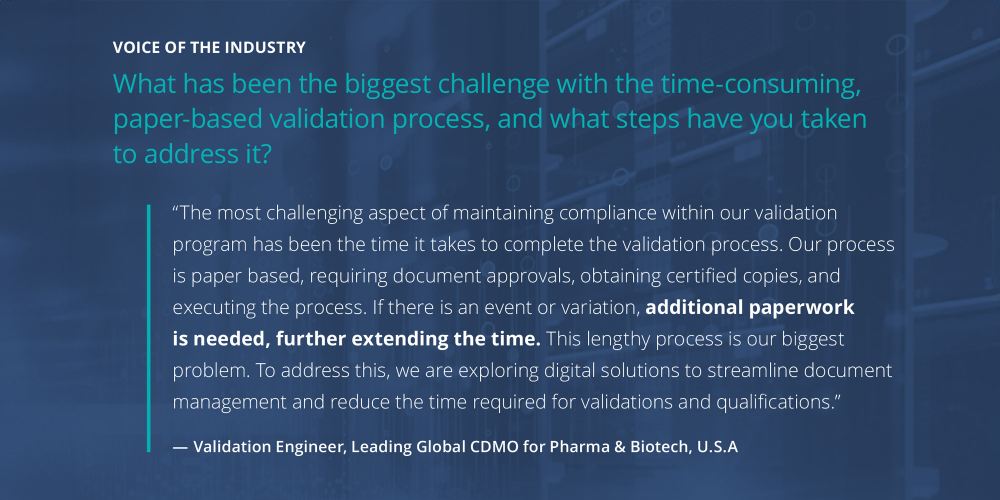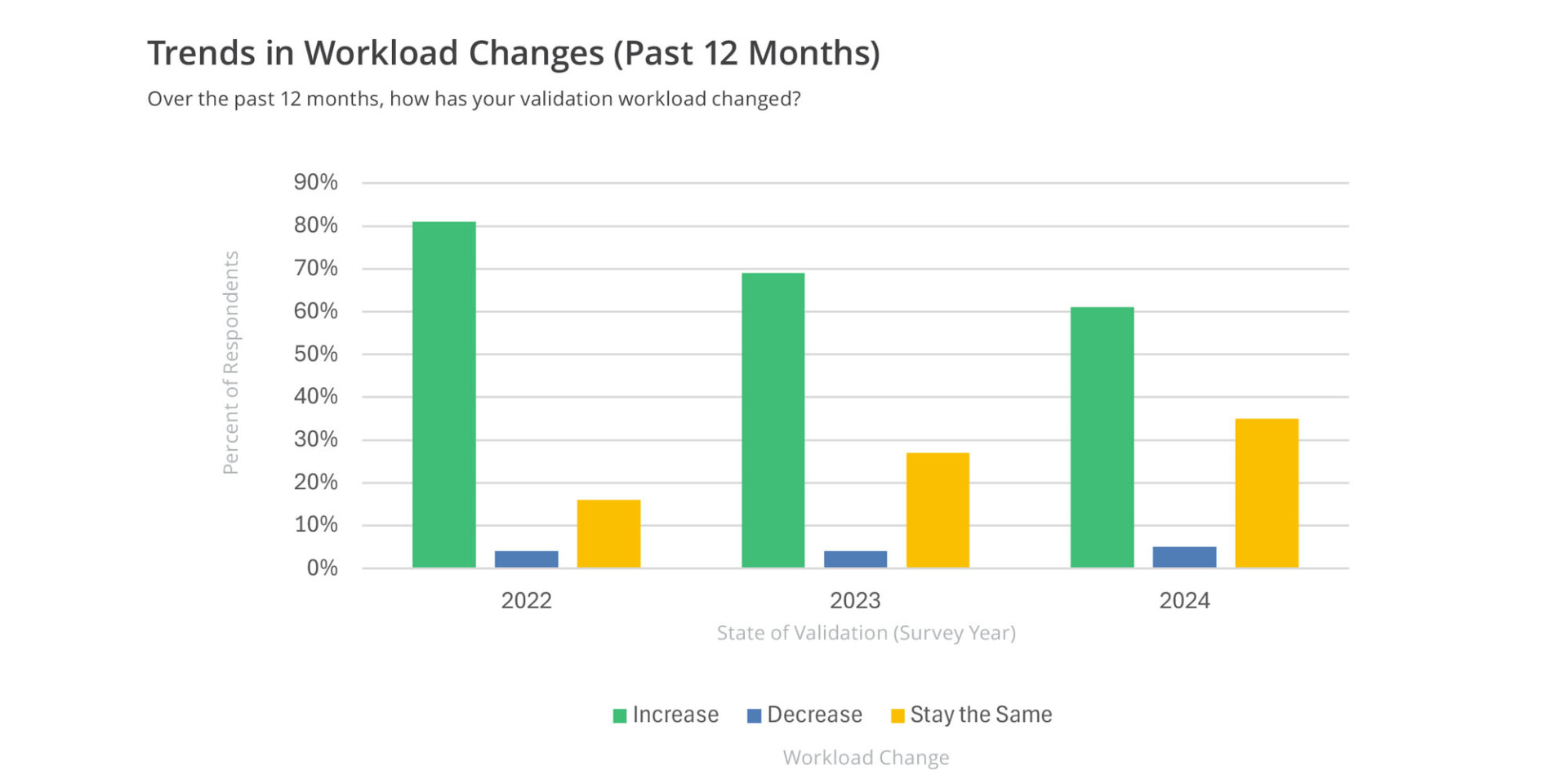The 2024 State of Validation study provides a comprehensive analysis of current trends, challenges, and opportunities within the validation industry. The 2024 State of Validation report is structured into five sections, each providing a comprehensive look at different aspects of the validation landscape:
- People and Organizations: Examines roles, team sizes, outsourcing, experience, salaries , demographics, and job functions.
- Validation Programs: Covers program structures, work processes, adoption rates of computer software assurance, budgets, workloads, and challenges.
- Goals and Growth: Analyzes strategic goals, growth plans, performance metrics, and success factors.
- Industry Change and Digital Transformation: Explores industry changes, digital transformation, remote assessments, technology impact, and ROI of digital validation systems.
- The Future of Validation: Assesses emerging technologies, methodologies like Industry/Pharma 4.0, industry evolution, and upcoming challenges.
In this blog post, we explore five key insights from the “Validation Programs” section of the report, shedding light on their current state and the future directions that are shaping the industry.
1. Shift Towards Site-Specific Validation Programs
One of the most significant findings in the report is the prevalence of site-specific validation structures. Nearly half (48%) of the organizations surveyed structure their validation programs by individual sites, which represents a deviation from the traditional best practice of centralized harmonization (see graph below).
Validation Program Structure

The data suggests that while some organizations still favor centralized or process-oriented structures, there is a trend towards decentralization, driven by the need for flexibility and local adaptation.
While this method can enhance compliance and efficiency at the site level, it may also introduce challenges in maintaining consistency across multiple sites, particularly for large, multinational organizations.
2. Increased Adoption of Computer Software Assurance (CSA)
The adoption of Computer Software Assurance (CSA) processes is another major trend highlighted in the report. Following the FDA’s 2022 draft guidance on CSA, many organizations have started to integrate these processes into their validation programs.
The report shows that 64% of organizations are either using or adopting CSA processes, indicating a growing recognition of its importance in enhancing validation practices (see graph below).

However, there remains a significant gap between awareness and full adoption, with only 15% of respondents reporting full integration of CSA processes. This highlights the need for continued education and support to help organizations fully embrace CSA and realize its benefits in reducing validation burden while maintaining compliance.
3. Persistent Challenges With Resource Allocation and Efficiency
Resource constraints, particularly in terms of human and technological resources, continue to be a significant challenge for validation programs. The report identifies a lack of human resources and technological tools as ongoing obstacles that hinder organizations from optimizing their validation processes.
Additionally, many organizations struggle with the high costs associated with validation, with 60% of respondents indicating that validation activities consume 8% to 10% or more of their project budgets (see chart below).

Despite these challenges, there is a clear trend towards prioritizing efficiency and cost-saving measures within validation programs. Companies are increasingly adopting automated solutions and risk-based approaches to streamline processes and reduce the financial burden of validation activities.
4. Validation-Related Challenges
The 2024 State of Validation report sheds light on the key challenges faced by organizations across industries. At the forefront is the burden of compliance, reflecting the complexity of regulatory requirements. Following closely are audit readiness and data integrity concerns, both critical to ensuring validation processes meet rigorous industry standards.
Resource limitations also post significant hurdles, with many organizations citing a shortage of skilled personnel and financial constraints as ongoing issues. The reliance on outdated, paper-based validation methods further complicates efforts to maintain efficiency and accuracy.

To address these challenges, the report highlights a growing need for digital transformation , better resource management, and continued investment in training and technology. By focusing on these areas, organizations can better navigate the complexities of validation and achieve sustained compliance and quality.
5. Increase in Validation Workload
The report reveals that 61% of respondents experienced an increase in their validation workload over the past 12 months. This rise in workload is largely attributed to heightened regulatory requirements, increased product development activities, and expansions in operational scope. As companies strive to keep up with these demands, validation teams are under growing pressure to perform more extensive and thorough validation activities.
Interestingly, while the increase in workload remains sizeable, there has been a notable shift towards greater stability in recent years. The percentage of respondents reporting an increase in workload has decreased from 81% in 2022 to 61% in 2024, indicating that organizations are beginning to reach a plateau (see chart below).

This could suggest that many companies are improving their validation processes, perhaps through the adoption of digital tools, automation, or by refining their resource management strategies.
Final Thoughts
The 2024 State of Validation report offers valuable insights into the current state of validation practices and the evolving landscape of the industry. The trends highlighted in this section, from the shift towards site-specific validation to the growing importance of digital transformation underscores the dynamic nature of the validation field.
As organizations continue to navigate these changes, it will be crucial for them to stay informed about industry best practices and leverage new technologies to enhance their validation programs. By doing so, they can ensure compliance, improve efficiency, and ultimately contribute to the delivery of safe and effective products in a highly regulated environment.
For a more detailed analysis and additional insights, access the full report and explore how these trends can inform your validation strategies and practices!






